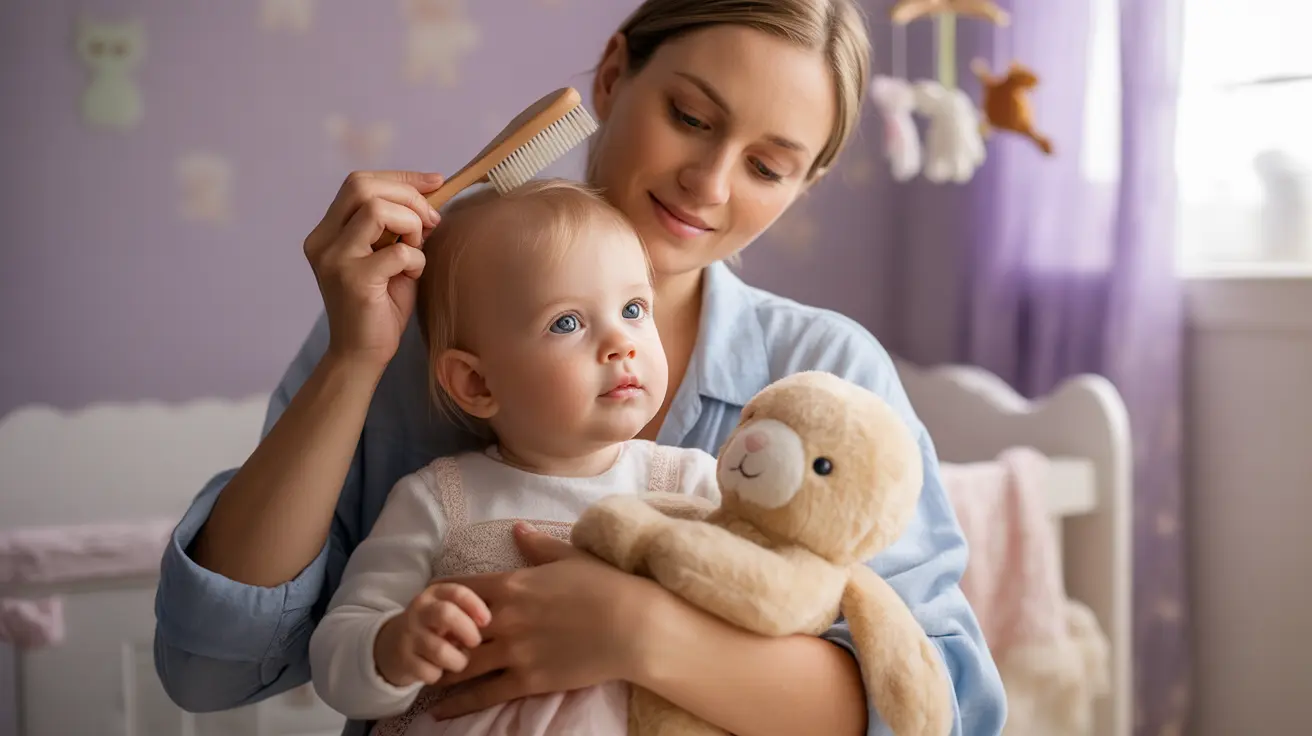If you've noticed your baby losing their hair or developing bald patches, you're not alone. Infant hair loss is a common and typically normal occurrence that affects many babies in their first few months of life. Understanding why this happens can help ease parents' concerns about their baby's hair development.
This comprehensive guide explores the causes of infant baldness, what's normal, when to seek medical attention, and what to expect as your baby's hair grows back.
Common Causes of Baby Hair Loss
There are several reasons why babies may experience hair loss or appear bald during their early months:
Hormonal Changes
During pregnancy, maternal hormones influence your baby's hair growth. After birth, these hormone levels naturally drop, often leading to temporary hair loss. This process, known as telogen effluvium, typically begins when babies are between 2 and 4 months old.
Physical Factors
Babies spend considerable time lying on their backs, which can create friction between their scalp and surfaces like mattresses or car seats. This friction may cause temporary hair loss, particularly at the back of the head.
Genetic Influences
Some babies are born with full heads of hair, while others have very little. This variation is largely determined by genetics and is completely normal. The thickness and timing of hair growth can vary significantly among infants.
Normal Hair Growth Patterns in Babies
Understanding the typical timeline of baby hair development can help parents know what to expect:
- Birth to 2 months: Initial hair present at birth may remain
- 2 to 4 months: Common period for initial hair loss
- 6 to 12 months: New hair typically begins growing
- 12 to 24 months: Fuller, more permanent hair establishes
When to Consult a Healthcare Provider
While most infant hair loss is normal, certain signs warrant medical attention:
- Circular bald patches with redness or scaling
- Hair loss accompanied by other symptoms
- Complete loss of eyebrows or eyelashes
- Hair loss persisting beyond 12 months
- Signs of skin irritation or infection
Managing Baby Hair Loss
While infant hair loss is usually temporary, there are ways to support healthy hair growth:
- Use gentle, baby-specific hair care products
- Avoid tight hairstyles or accessories
- Alternate your baby's head position during sleep
- Ensure proper nutrition through breast milk or formula
- Keep the scalp clean and healthy
Frequently Asked Questions
Why is my baby losing hair and becoming bald in the first few months?
Babies often lose their initial hair due to hormonal changes after birth and the natural hair growth cycle. This process typically begins between 2 to 4 months of age and is completely normal.
How long does it usually take for a baby's hair to grow back after hair loss?
Most babies begin growing their new, permanent hair between 6 to 12 months of age. The complete process of hair regrowth can take up to 24 months.
Can rubbing or sleeping position cause bald spots on my baby's head?
Yes, friction from rubbing against surfaces while sleeping or lying down can cause temporary bald spots, particularly at the back of the head. This type of hair loss typically resolves once the baby becomes more mobile.
When should I worry about my baby's hair loss and see a doctor?
Consult a healthcare provider if you notice circular bald patches, scalp inflammation, complete loss of eyebrows or eyelashes, or if hair loss persists beyond 12 months.
What is cradle cap and can it cause my baby to lose hair?
Cradle cap is a common scalp condition causing scaly, crusty patches. While it typically doesn't cause permanent hair loss, severe cases might lead to temporary hair loss. The condition usually resolves on its own with proper care.




